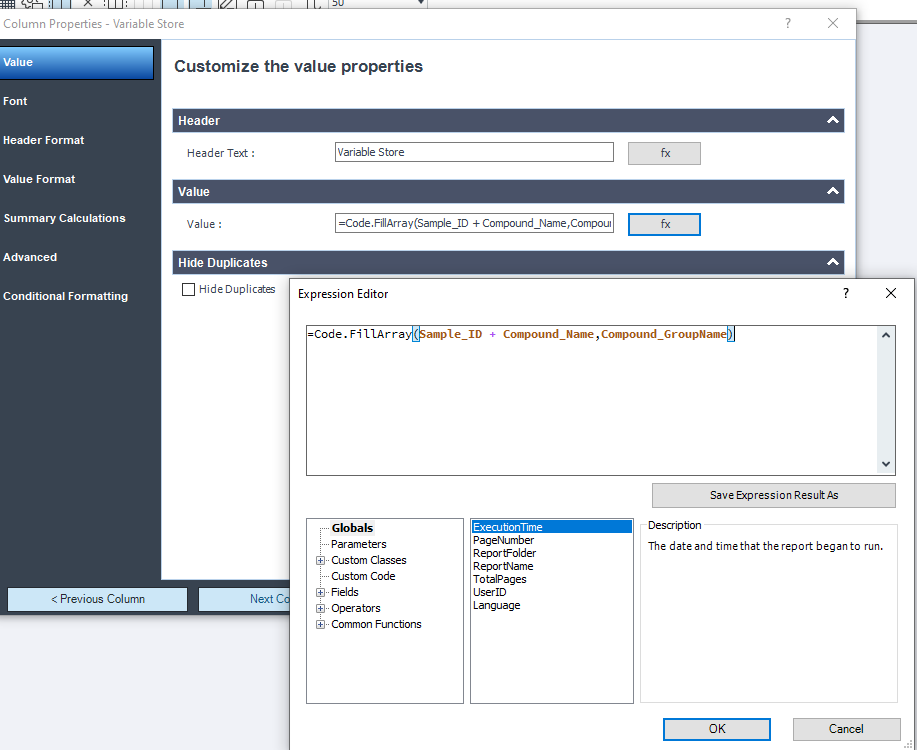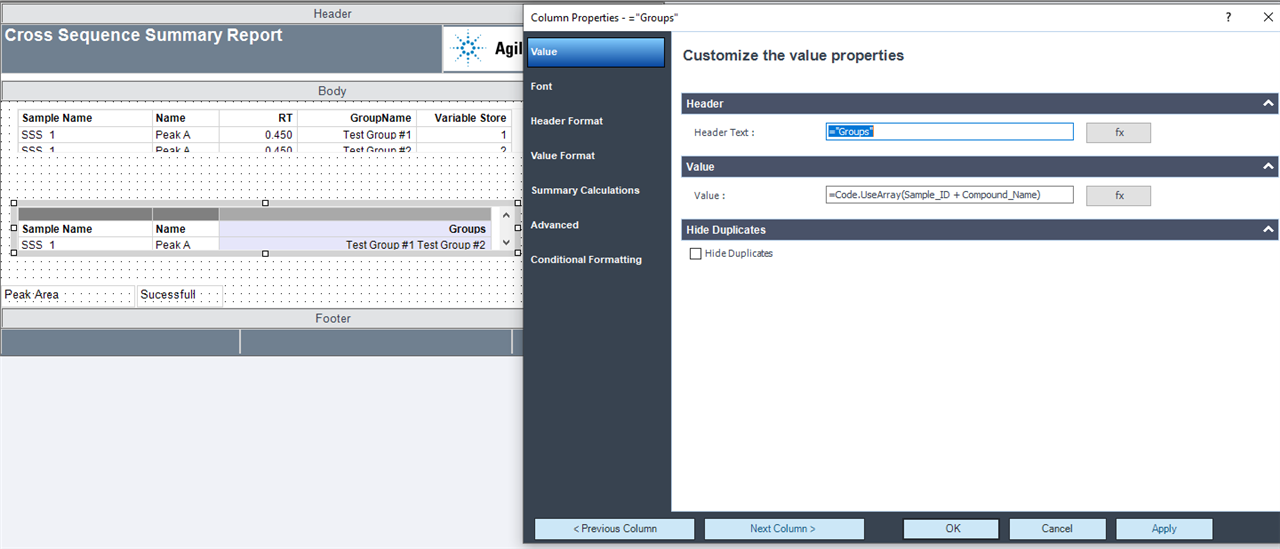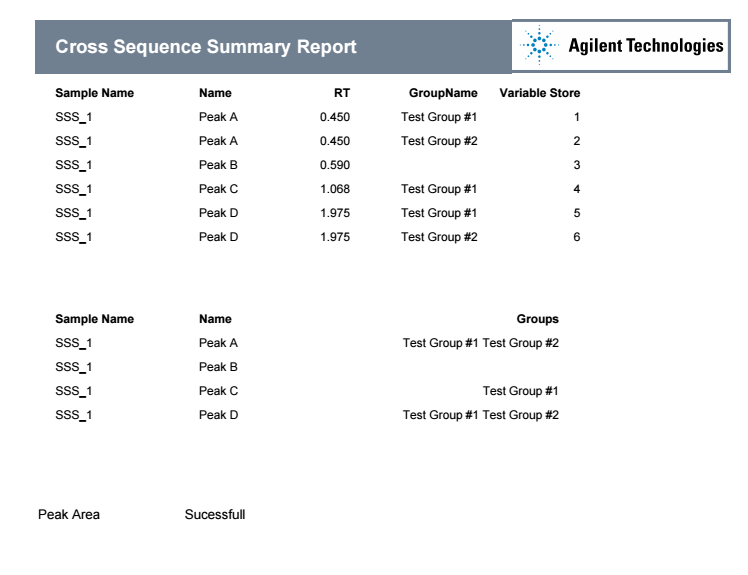Hi!
In the openlab 2.4's report editor I've created a textbox with a Function() ... End Function stuff, the result is in String format. Is it possible to store it in a variable? It seems the Save Expression Result as function excepts only numeric results... or can it be anything?
Background: From any injection in the seq, it can extract a series of factors in str format something like this:
description: " Text Text abcdef Factors=1 1 1:0.1:1/0.3/0.3" -> Ripped&Converted part: "1:1:1:0.1:1:0.3:0.3"
and then there is an array of compund_name(number), (where number is the rownumber of the component in the processmethod's identification list) and i want to split the factor string, then choose the compound_name(number) item from it. Will use for further calculation, without any CC columns in the seq list.
Thanks,
Peter




